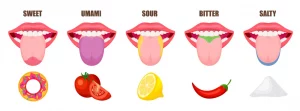
Reading Food Labels A Guide to Making Informed Choices
In today’s world of processed foods, reading food labels has become an essential skill for making informed and healthy choices. Food labels provide valuable information about the nutritional content of products, allowing consumers to make educated decisions about what they put into their bodies.
Understanding Food Labels
Food labels are required by law in many countries and provide information about the ingredients, nutritional content, and other relevant details of a food product. The specific format and content of food labels may vary slightly between countries, but they generally include the following information:
- Product name: The name of the food product.
- Net weight or volume: The quantity of the product.
- Ingredient list: A list of all ingredients in the product, listed in descending order by weight.
- Nutrition facts: A panel that provides information about the serving size, calories, fat, carbohydrates, protein, sodium, and other nutrients.
- Allergen information: A statement indicating whether the product contains any of the major allergens, such as milk, eggs, fish, shellfish, tree nuts, peanuts, wheat, soybeans, and soy products.
Key Nutritional Information to Look For
When reading food labels, pay close attention to the following nutritional information:
- Calories: The number of calories in a serving of the product.
- Fat: The total fat content, as well as the amount of saturated fat, trans fat, and cholesterol.
- Sodium: The amount of sodium in the product.
- Carbohydrates: The total carbohydrates, including the amount of dietary fiber and sugars.
- Protein: The amount of protein in the product.
- Vitamins and minerals: The amount of essential vitamins and minerals, such as calcium, iron, and vitamin C.
Decoding Nutrition Facts Labels
The nutrition facts panel on a food label provides a breakdown of the nutritional content of the product. Here’s a brief explanation of the key terms:
- Serving size: The amount of the product that is being analyzed for nutritional content.
- Servings per container: The number of servings in the entire package.
- Calories: The amount of energy in a serving.
- % Daily Value: This percentage shows how much a serving of the food contributes to your daily diet for a specific nutrient.
Tips for Reading Food Labels
- Compare products: Compare the nutritional information of different brands or varieties of the same product to find the healthiest option.
- Look for hidden sugars: Be aware of added sugars, which can be listed under various names, such as high-fructose corn syrup, sucrose, and dextrose.
- Choose whole grains: Opt for products made with whole grains, which are higher in fiber and nutrients than refined grains.
- Limit processed foods: Processed foods are often high in unhealthy fats, sodium, and added sugars.
- Consider portion sizes: Be mindful of the serving size listed on the label and adjust your intake accordingly.
The Importance of Reading Food Labels
Reading food labels is essential for making informed choices about the foods you consume. By understanding the nutritional content of products, you can make healthier decisions and improve your overall well-being. Additionally, reading food labels can help you identify allergens, avoid unwanted additives, and support sustainable food practices.





